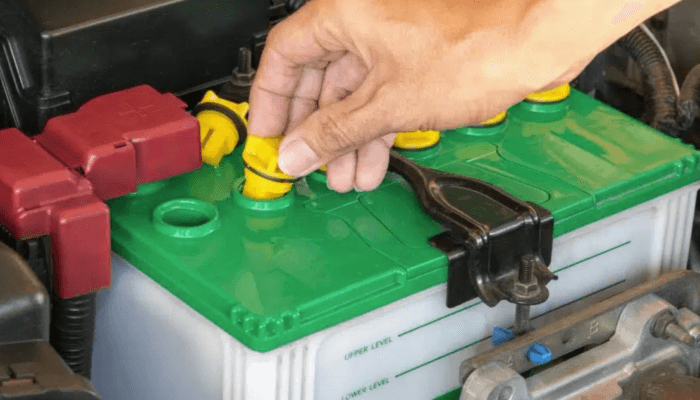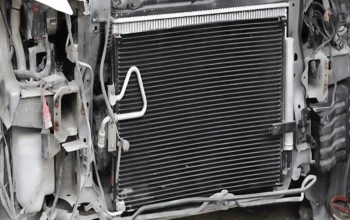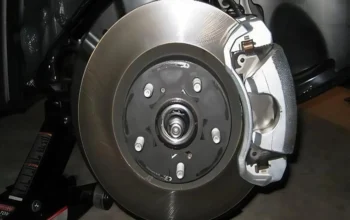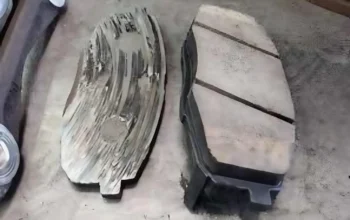Pena Global – Is your vehicle refusing to start due to a dead battery? Don’t worry—you’re definitely not alone. A dead car battery is one of the most common problems drivers encounter, and in many cases, you don’t need a mechanic or a brand-new battery to solve it.
Depending on your vehicle, you likely use one of two common types of batteries: a conventional wet-cell battery or a maintenance-free (MF) sealed battery. In this guide, we’ll explain the differences between them, and most importantly, how to revive a dead car battery—even at home.
Table of Contents:
- Common Causes of a Dead Battery
- Types of Vehicle Batteries: Wet-Cell vs. Maintenance-Free
- How to Fix a Wet-Cell Battery
- How to Fix a Maintenance-Free (MF) Battery
- Signs That Battery Repair Worked
- Emergency Option: Jumpstart a Dead Battery
- How to Keep Your Battery in Good Shape
- Final Thoughts: Repair or Replace?
Common Causes of a Dead Battery
Before we jump into repairs, let’s quickly understand what usually causes a battery to go dead:
- Infrequent Driving – Long periods of inactivity can cause battery discharge.
- Faulty Charging System – A weak alternator, voltage regulator, or rectifier can result in insufficient charging.
- Battery Age or Quality – Older or low-quality batteries naturally degrade faster.
- High Electrical Load – Using too many electronic accessories can overburden the battery.
- Extreme Temperatures – Both cold and heat can reduce battery performance and lifespan.
It’s also important to confirm that the battery is the problem, not the vehicle’s charging system. If your alternator or voltage regulator is faulty, even a new battery will eventually die.
Types of Vehicle Batteries: Wet-Cell vs. Maintenance-Free
Understanding your car battery type is essential before attempting any repair or maintenance. Most vehicles today use one of two main types of lead-acid batteries: Wet-Cell (Flooded) and Maintenance-Free (MF) Sealed. While both serve the same function—starting your engine and powering electrical systems—they differ in design, maintenance requirements, and durability.
1. Wet-Cell Battery (Flooded Lead-Acid Battery)

Also known as conventional batteries, wet-cell batteries have been around for decades and remain popular due to their affordability and ease of service.
Key Features:
- Contains liquid electrolyte (a mix of sulfuric acid and water)
- Usually has removable caps for fluid inspection and refill
- Requires periodic maintenance to top off distilled water levels
- More sensitive to tilting or vibrations due to liquid movement
- Tends to have a shorter lifespan if not regularly maintained
Pros:
- Cheaper upfront cost
- Can be reconditioned or revived in many cases
- Ideal for DIY users who don’t mind regular checks
Cons:
- Requires manual maintenance (fluid level checks)
- Can leak or spill if improperly handled
- Performance may degrade faster under harsh conditions
2. Maintenance-Free (MF) Sealed Battery

These batteries are an evolution of the traditional flooded design but sealed to eliminate the need for user maintenance.
Key Features:
- Completely sealed casing with no accessible caps
- Uses calcium or other additives to reduce water loss
- Designed to be “fit and forget” with minimal attention needed
- Often labeled as “MF” or “Sealed” on the battery itself
- Some models still have hidden access points under the label for advanced users
Pros:
- No need to check or refill fluid
- Cleaner and safer to handle
- Better resistance to vibration and tilt, making it ideal for modern vehicles
Cons:
- More expensive than wet-cell types
- Harder (sometimes impossible) to recondition once dead
- Failure often means replacement is the only option
🔎 Quick Comparison Table:
| Feature | Wet-Cell Battery | Maintenance-Free Battery |
|---|---|---|
| Fluid Maintenance | Yes | No |
| Cost | Lower | Higher |
| Serviceability | Easy to service | Hard to service |
| Risk of Leakage | Moderate | Very Low |
| Lifespan (Average) | 2–4 years (with maintenance) | 3–5 years (no maintenance) |
| Reconditioning Possible? | Yes | Rarely |
| Recommended For | DIYers, budget builds | Daily drivers, modern cars |
How to Fix a Wet-Cell Battery
These are traditional lead-acid batteries that contain liquid electrolyte. If they stop working, you can often recondition them by replacing the old fluid and recharging the battery.
What You’ll Need:
- Protective gloves and eyewear
- Flathead screwdriver
- Battery acid (electrolyte solution)
- Hot distilled water
- Plastic funnel
- Small container or bucket
- Battery charger (optional but recommended)
Steps to Restore a Wet Battery:
- Remove the Battery
Safely disconnect and remove the battery from your vehicle. - Open the Cell Caps
Use a screwdriver to carefully open the caps on top of the battery. - Drain the Old Electrolyte
Pour the old electrolyte into a container for proper disposal. Be extremely careful—this fluid is corrosive. - Flush with Hot Distilled Water
Rinse each cell by filling it with hot distilled water, gently shaking the battery, and draining it. Repeat until the water comes out clear. - Refill with Fresh Electrolyte
Use a funnel to pour new battery acid into each cell, filling it to the recommended level. - Let the Battery Sit
Allow the battery to rest for 30–60 minutes to stabilize the chemical reaction. - Recharge the Battery
Connect to a battery charger and charge fully before reinstalling. - Test the Battery
Reinstall the battery and test it by starting your vehicle and checking for consistent power.
How to Fix a Maintenance-Free (MF) Battery
Maintenance-free batteries are sealed and don’t require fluid top-ups. However, if they lose charge due to electrolyte loss or sulfation, you can still try to revive them using the method below.
What You’ll Need:
- Flathead screwdriver or utility knife
- Syringe (medical or ink-refill type)
- Battery acid (electrolyte)
- Clean cloth
- Battery charger
Steps to Revive an MF Battery:
- Remove the Battery
Disconnect the battery from your vehicle or device. - Clean the Exterior
Wipe the case clean to remove dirt or corrosion. - Access the Internal Ports
Use a knife or screwdriver to carefully pry off the battery’s top cover. Underneath, you may find small rubber seals or hidden ports. - Inject Fresh Electrolyte
Using a syringe, inject a small amount of battery acid into each port—just enough to reach near the top of the plates inside. - Seal and Cover
Reinsert the rubber plugs and reseal the top cover if needed. - Charge the Battery
Use a smart battery charger to bring the battery back to life. Avoid fast chargers—they may damage the internal plates. - Test After Charging
Once fully charged, reinstall the battery and check voltage and starting power.
Signs That Battery Repair Worked
After you’ve revived the battery, look for these positive signs:
- Engine starts easily and consistently
- Lights and electronics are functioning normally
- Voltage remains stable (around 12.6V when fully charged)
If the battery still struggles to hold charge, it may be permanently damaged and require replacement.
Emergency Option: Jumpstart a Dead Battery
If you’re stuck and need a quick fix, jumpstarting is a temporary option:
- Connect Positive Terminals
Use jumper cables to connect the red clamps to the positive (+) terminals of both batteries. - Connect Negative to Ground
Connect one black clamp to the working battery’s negative (–) terminal, and the other to a grounded metal part on the dead vehicle (not the battery itself). - Start the Working Vehicle
Let it run for a few minutes, then try starting the dead one. - Let It Run
Once your car starts, let the engine run for 15–30 minutes to recharge the battery.
How to Keep Your Battery in Good Shape
To avoid facing a dead battery again, follow these tips:
Drive Regularly
Frequent use helps keep the battery charged and active.
Maintain Your Charging System
Check alternator and voltage regulator function regularly.
Avoid Unnecessary Accessories
Don’t overload your electrical system with too many gadgets.
Use Quality Batteries
Stick to trusted brands with proven performance and reliability.
Final Thoughts: Repair or Replace?
Many batteries can be revived, especially if they’re not too old or severely damaged. Learning how to fix a dead car battery at home can save you money and time. Just be sure to follow safety procedures and use the right tools and materials.
But if your battery is more than 3–4 years old or shows signs of severe internal failure, replacing it with a new one is likely the smarter choice.






